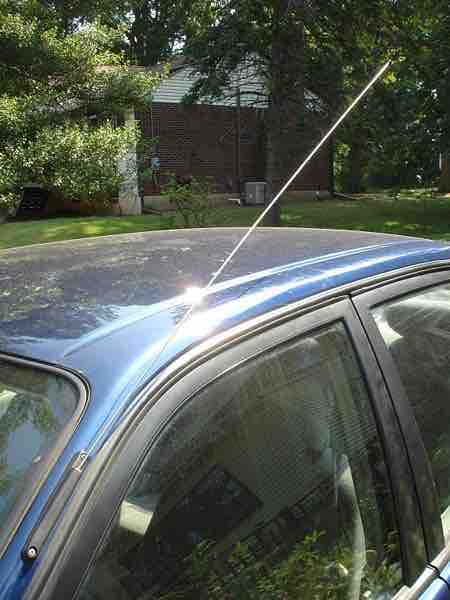Maxwell's equations predicted that all light waves have the same structure, regardless of wavelength and frequency. As a consequence, visible light and radio waves should share common characteristics. Maxwell's 1865 prediction passed an important test in 1888, when Heinrich Hertz published the results of experiments in which he showed that radio waves could be manipulated in the same ways as visible light waves. To aid in his experiment, Hertz built the first antenna.
shows a common car antenna. An antenna (or aerial) is an electrical device that converts electric power into radio waves, and vice versa. Usually, it is used with a radio transmitter or radio receiver. In transmission, a radio transmitter supplies an oscillating radio frequency electric current to the antenna's terminals, and the antenna radiates the energy from the current as electromagnetic waves (radio waves). In reception, an antenna intercepts some of the power of an electromagnetic wave in order to produce a tiny voltage at its terminals. This voltage is applied to a receiver to be amplified.

Car Antenna
A common car antenna that converts electric power in the air into electromagnetic waves.
Antennas are essential components of all types of equipment that utilize radio. These include: radio broadcasting, broadcast television, two-way radio, communications receivers, radar, cell phones, and satellite communications; as well as other devices such as garage door openers, wireless microphones, bluetooth enabled devices, wireless computer networks, baby monitors, and RFID tags on merchandise.
Antennas may also include reflective or directive elements or surfaces not connected to the transmitter or receiver, such as parasitic elements, parabolic reflectors, or horns. These serve to direct the radio waves into a beam or other desired radiation pattern. Antennas can be designed to transmit or receive radio waves in all directions equally (omnidirectional antennas), or transmit them in a beam in a particular direction and receive from that one direction only (directional or high gain antennas).